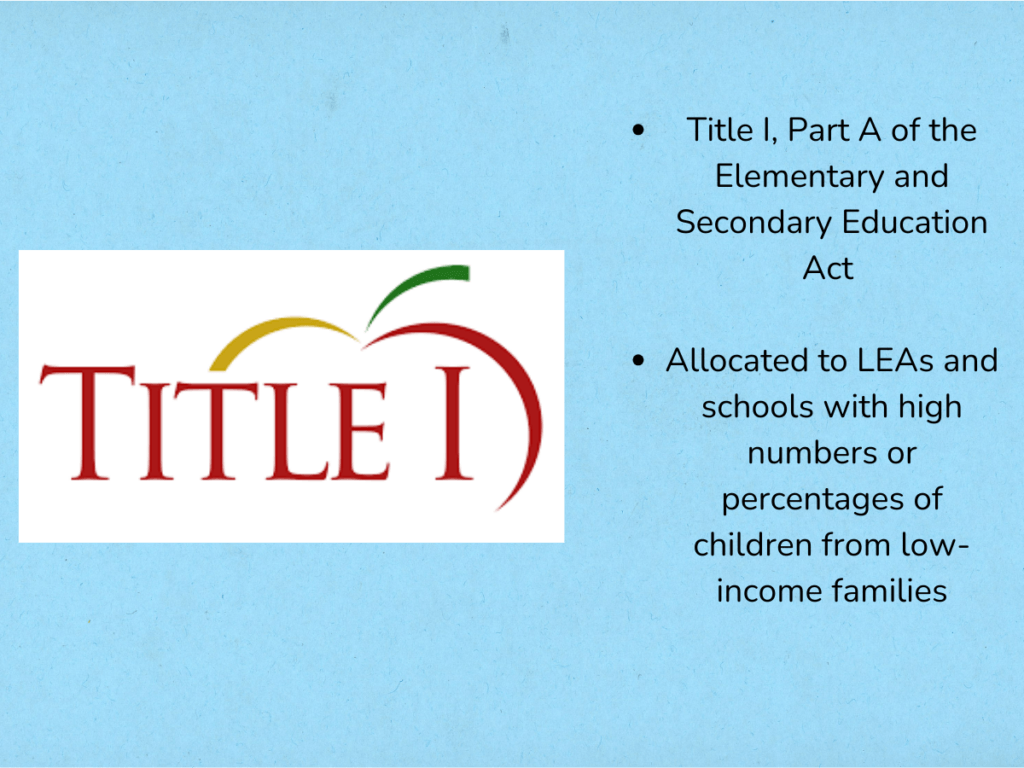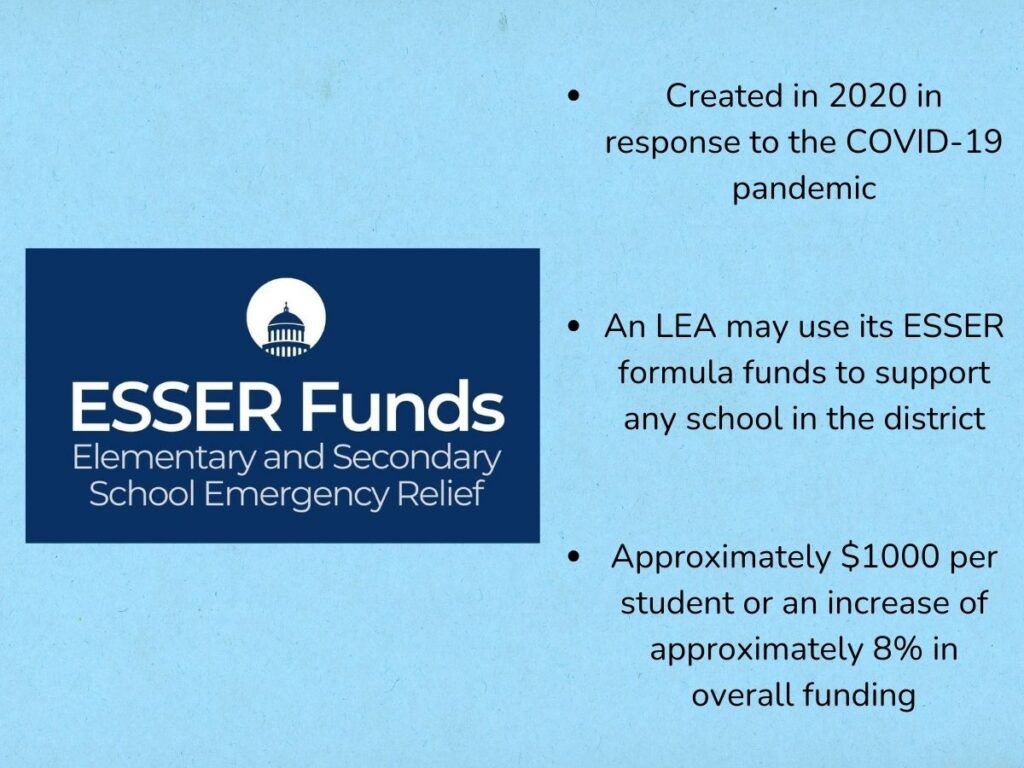Your School’s Tutoring Funding Options Explained
From Title I to the ESSER, there are numerous federal initiatives to help schools implement and fund in-school interventions, especially tutoring. This article outlines the different funding streams available for tutoring in your school in 2023/24.
It’s no secret that the disrupted learning during and after the recent Covid-19 pandemic has had a significant impact on the opportunity gap, particularly in math.
Overall, students have made less progress than in previous years, and the opportunity gap between disadvantaged students and their peers has widened. The Nation’s Report Card, created by the National Assessment of Educational Progress (NAEP), outlined an increase in the percentage of students nationwide who were not mathematically proficient from 2019 to 2022. This clearly underscores an increased learning loss in mathematics.
As a result, schools now have additional funding available to help advance equity in education, and high-dosage tutoring plays a key part in how the U.S. Department of Education (ED) expects schools to spend this funding.
High Impact Tutoring Guide for Schools
Download this in-depth review of the most popular tutoring approaches.
Download Free Now!Why the emphasis on tutoring?
Research from Brown University suggests that tutoring is one of the most effective ways to close the opportunity gap. Evidence indicates that the best way to be sure that tutoring is effective, targeted and aligned with classroom learning is to ensure that the tutoring provider is selected and approved by school leaders.
This tutoring might be in small groups or on a one-on-one basis, depending on the needs of schools and students. According to the Brown University study, one-on-one tutoring, in particular, delivers approximately five additional months’ progress on average.
However, tutoring has traditionally been seen as expensive for schools, and limited school budgets have meant it’s not always something that schools or local education agencies (LEAs) have been able to prioritize.
This is where Third Space Learning‘s model of affordable tuition focused on individual students’ gaps has proved extremely cost-effective for thousands of schools and over 150,000 students over the past 10 years. If you’re new to how this works, take a look at the math tutoring on offer.
What are the options for funding tutoring in your school?
With multiple funding pots available, it can be difficult to understand what the options are and what they’ll actually mean for your students.
Here we’ll break down the different routes schools have to receive funding for tutoring and other targeted support to help school and district leaders best allocate their budget, staffing, and interventions over the next school year.
Title I (ESEA)

Title I funding refers to Title I, Part A of the Elementary and Secondary Education Act (ESEA).
Title I is federal funding allocated to LEAs and schools with high numbers or percentages of children from low-income families. This is to ensure that students meet state academic standards.
Title I is the largest federal aid package for schools in America.
Who is eligible for Title I funding?
Schools are eligible for Title I funding if at least 40% of their students are from low-income families, meaning the students receive Free and Reduced Lunch. The funding is used for schoolwide programs that serve the lowest achieving students. These programs could be:
- One on one or small group tutoring
- Before and after school programs
- Classes with fewer students
- Technology support
- Summer programs
Title I Funds are currently allocated through 4 grants:
- Basic Grants (the largest component of Title I)
This is when an LEA finds, through parent applications or targeted assistance, that a minimum of 10 students per school (or at least 2% of school-age children in the district) are eligible for free or reduced lunch, then the LEA receives a grant of Title I money.
- Concentrated Grants (the smallest component of Title I)
These are funds available for school districts where the number of low income students exceeds 6,500 or 15% of the district’s 5 to 17 year olds.
- Targeted Grants
These funds are based on the same data used for Basic and Concentrated Grants except that the data are weighted. The LEAs with higher numbers or percentages of children receive more funds.
- Education Finance Incentive Grants
Given to states to provide school districts with additional funding for low-income and disadvantaged students.
If an LEA finds, through parent applications or targeted assistance, that a minimum of 10 students per school, or at least 2% of school-age children in the district are eligible for free or reduced lunch, then the LEA receives a grant of Title I money which is sent from the federal government to the state department of education.
However, not every eligible school necessarily receives funding. An LEA might, for example, choose not to serve eligible schools with lower poverty rates so it can concentrate funds in its highest poverty schools.
73% of schools signed up for Third Space Learning math tutoring are Title 1 schools, with over 40% of the student body coming from low income backgrounds.
How much Title I funding do schools receive?
Typically $500-600 per student per year for eligible Title I schools, although this varies based on location. Visit the Department of Education website for more information on specific funding available to your state.
How can Title I funding be spent?
The funding can be spent in one of two ways:
- A schoolwide program model where the school may use Title I funds to upgrade its entire educational program and all students in the school can participate in Title I funded activities.
- A targeted assistance program model where the school must use Title I funds to provide additional supports to specific students struggling to meet state standards.
As a targeted pull-out intervention for struggling students, Third Space Learning tutoring is an example of the second option.
How long will Title I funding be available?
Any changes made to the formulas that allocate Title I funds require a reauthorization of ESEA, which takes place every five years.
What to consider when spending Title I funding on tutoring
- Requesting a Title I grant involves an application process where a school must describe how the funds would be used to improve academic performance.
- In-school teachers and paraprofessionals that provide tutoring in a Title I program must meet state qualification requirements; external tutoring providers don’t.
ESSER

Elementary and Secondary School Emergency Relief (ESSER) funding was created in 2020 in response to the COVID-19 pandemic. You may also know it as part of the American Rescue Plan Act (ARPA). Here’s how it is distributed:
- The US Department of Education distributes funds to State Educational Agencies (SEAs) e.g. the New York State Education Department.
- SEAs distribute a minimum of 90% of it to LEAs, e.g. the Newark Central School District.
- LEAs distribute it to schools in need.
ESSER funding is awarded to SEAs in the same proportion as each state received funds under Title I.
Who is eligible for ESSER funding?
An LEA may use its ESSER formula funds to support any school in the district, regardless of a school’s Title I status.
It may target funds based on poverty, indication of school needs, or other targeting measures. Schools will need to apply to their LEA to become a subrecipient of ESSER funding.
How much ESSER funding do schools receive?
ESSER provides approximately $1000 per student or an increase of approximately 8% in overall funding, depending on your state.
How can ESSER funding be spent?
The main focus of ESSER funding is to help close learning gaps created by disrupted learning during the COVID-19 pandemic. Therefore, according to this report by the US Department of Education, one of the most popular eligible ways to spend ESSER funding is as follows:
- Addressing the academic impact of lost instructional time among an LEA’s students, including low-income students, students with disabilities, English language learners, racial and ethnic minorities, students experiencing homelessness, and children and youth in foster care, including by:
- Providing high-quality, reliable assessments that accurately assess students’ academic progress.
- Administering evidence-based activities to meet the comprehensive needs of students.
As one of the most effective ways to close the achievement gap amongst students impacted by the pandemic, tutoring is one of the most popular ways to spend Covid-19 relief funding.
How long will ESSER funding be available?
The ESSER funding program is available until September 2024. This is the last school year in which it will be available. The funding needs to be obligated by this date, but can be used to fund tutoring for future years.
What to consider when spending ESSER funding on tutoring
- Schools must track and report all spending associated with ESSER funding, including providing detailed records of how the funds were used and documenting that the money was spent according to their approved plan.
- School administrators must make sure they use ESSER funds before they expire in September 2024.
Another path to funding: grants
In addition to federal and state funding, when researching your intervention options, it’s worth looking at any organizations that have been awarded grants from nonprofits and charities. All states have organizations that offer grants for public schools. Doing research to find these organizations is relatively easy. However, be aware that many grants have strict deadlines for applications, so be sure to apply early in the school year. These grants can be a path to subsidized tutoring in your school.
Third Space Learning is proud to be one of 32 organizations supported by Accelerate’s Call to Effective Action (CEA) Grant for 23/24: an initiative that supports innovative, scalable tutoring models across the United States. This means we are able to:
– Reduce the cost of tutoring during the 23-24 school year
– Provide headsets and microphones free of charge
– Remove all set-up costs
– Assign your school a dedicated account manager
How can schools maximize funding?
Research from Brown University in collaboration with the National Student Support Accelerator suggests that high-impact tutoring is one of the best ways to spend Title I, ESSER, and grant funding.
According to the report, schools should look for tutoring programs with the following features:
1. Tutoring embedded during the school day
For tutoring to be successful and funding to be well-spent, tutoring needs to be as much part of a student’s day as their usual math or English lessons. If tutoring is seen as an add-on, students won’t feel invested and are less likely to attend.
For example, most schools choose for their Third Space Learning sessions to take place in either an intervention block or a ‘WIN’ block in school hours, increasing student attendance and reaching the most in-need students.
2. Weekly tutoring sessions of approximately 30-60 minutes per lesson
Regular practice is key to ensure students understand the topics they’re working on. Studies have suggested the key to strong semantic memories is the practice of revisiting concepts over and over, particularly in math.
That’s why Third Space Learners work one-on-one with the same tutor week on week, building valuable rapport and mastering standards through regular practice.
3. Initial training for tutors and ongoing coaching to ensure effective programs
To run engaging sessions and keep students focused, tutors need to be trained in not only the content they’re teaching but also how to teach it. Being a math specialist is only one part of a great lesson.
For example, Third Space Learning tutors undergo rigorous training in both the standards they teach as well as in pedagogical foundations to encourage student metacognition.
4. Data-informed tutoring to help tutors understand students’ strengths and needs
There is no one-size-fits-all approach to learning. However, it can be difficult to adjust class teaching to each student’s own needs and preferred pace.
By incorporating diagnostic and formative assessment into the program structure, Third Space Learning’s math tutoring is completely personalized to each student’s gaps. This also enables the tutor to adapt their teaching to suit each student’s own pace.
5. Engaging tutoring materials, aligned with research and state standards
Tutoring lesson content is best when it’s designed by former teachers with real experience of classroom teaching.
Third Space Learning’s educational content has been designed by pedagogy experts and former US teachers to ensure alignment with state standards and research on effective teaching and learning.
Further reading:
- The Nation’s Report Card (NAEP)
- Brown University Study: The Impressive Effects of Tutoring on Pre K-12 Learning: A Systematic Review and Meta-Analysis of the Experimental Evidence
- Title I funding by state
- Using ESSER and GEER funding: FAQs
- Using the American Rescue Plan Act Funding For High-Impact Tutoring
Do you have students who need extra support in math?
Give your students more opportunities to consolidate learning and practice skills through personalized math tutoring with their own dedicated online math tutor.
Each student receives differentiated instruction designed to close their individual learning gaps, and scaffolded learning ensures every student learns at the right pace. Lessons are aligned with your state’s standards and assessments, plus you’ll receive regular reports every step of the way.
Personalized one-on-one math tutoring programs are available for:
– 2nd grade tutoring
– 3rd grade tutoring
– 4th grade tutoring
– 5th grade tutoring
– 6th grade tutoring
– 7th grade tutoring
– 8th grade tutoring
Why not learn more about how it works?



